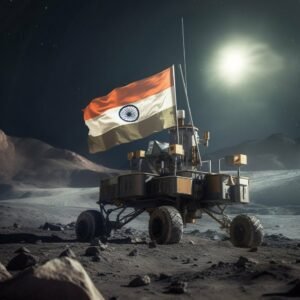ISRO and India created history when Chandrayaan 3 landed around the south pole of the Moon. With the landing of the Vikram lander, India became the fourth country in the world to land on the Moon and the only country so far to do so at the lunar south pole.

Landing on the lunar south pole has set the Chandrayaan missions apart. For various reasons, many space agencies have tried to land on the lunar south pole. However, all, barring India, have been unsuccessful so far.
ISRO Chief S Somanath has revealed why the Moon’s south pole is essential to the scientific community and why Chandrayaan 3 landed there.
Why Chandrayaan 3 landed on Moon’s South Pole
Speaking to ANI, Somanath revealed that India’s Chandrayaan 3 was closest to the south pole, at almost 70 degrees, and what advantages the Vikram lander’s position had.
“We have gone closer to the South Pole, which is almost 70 degrees. The South Pole has a specific advantage concerning being less illuminated by the sun,” he said. “There is a potential to have more scientific content from that area regarding water retention below the sub-surface, along with elemental composition and electrical activities on the Moon’s surface. It would be more dominant there, that it would be around the Moon’s equator.
He also explained why scientists worldwide are keen on exploring the lunar south pole. “Scientists working on the moon showed a lot of interest in the South Pole because, ultimately, human beings want to go & create colonies and then travel beyond,” he said.
“So the best place is something we are looking for & the South Pole has the potential to be that,” he added.
How Pragyan Rover will carry out its mission
Somanath also revealed what the plan will be for Pragyan Rover. Apart from conducting its studies and data collection, the Rover will also traverse the Moon’s South Pole. “We will do a robotic path-finding exercise, which will be very important for future explorations.”
He added that all the data from the Lander and Rover will give us more data and help us better understand the lunar surface.
He also explained how Pragyan will carry out its studies. “Pragyan Rover has two instruments related to elemental composition findings on the Moon and chemical compositions. One is based on laser and the other on alpha particles,” he explained.









